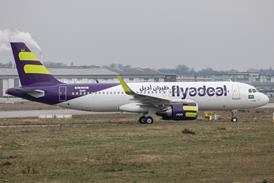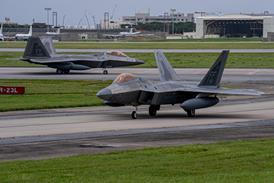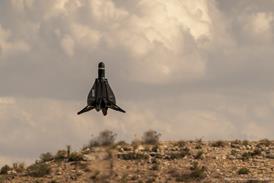Tim Ripley
European and American missile makers are still trading punches as the United Kingdom beyond visual range air-to-air missile (BVRAAM) contest enters its final lap.
With key decision makers in the UK's Ministry of Defence (MoD) meeting yesterday to make technical recommendations to Prime Minister Tony Blair, Europe's Matra BAe Dynamics (MBD) raised the stakes with new gambits and America's Raytheon was poised to make a counter-move.
Both companies are playing for high stakes in the $1.2 billion programme, with politicians from both sides of the Atlantic, including President Bill Clinton and government leaders from France, Germany, Italy, Spain and Sweden all lobbying Blair in recent days.
Last Thursday, MBD opened the latest round of the missile war with a proposal to set up a trans-Atlantic link to Boeing to offer Meteor-based technology to the Pentagon. At the same time MBD deputy chief executive Alan Garwood announced a $45-million dollar investment at the company's Stevenage development and production site.
Raytheon is to hold a UK press conference today to announce "significant news" to take its campaign to the next stage as the countdown begins to the final decision by the UK's defence and overseas policy committee, chaired by Blair, in early March.
Garwood announced that MBD and Boeing are urging the Pentagon to agree to a government-level trans-Atlantic co-operation pact on the Meteor missile programme. In letters to Jacques Gansler, the US Undersecretary of Defense Acquisition and Technology, they claim that Meteor offers the opportunity for what they call "real and meaningful" trans-Atlantic co-operation, creating a genuine competition in the air-to-air missile arena, challenging Raytheon's current grip on this segment of the US defence market.
Co-operation
The Meteor team, which includes MBD, Alenia Marconi Systems of Italy, LFK of Germany, CASA of Spain, Saab of Sweden and Boeing, are proposing that if their missile is selected, the UK MoD should approach the Pentagon with a view to establishing goverment-to-government co-operation on Meteor.
Garwood says Meteor would offer an excellent springboard for Boeing and the European team to offer the US government Meteor-derived technology and hardware to meet its advanced and long-term missile system requirements.
"The potential for such co-operation has been greatly enhanced by the presence of Boeing on the Meteor team," says Garwood.
"This provides a very clear signal to the US government that strong relationships with American industry are very important to us. Boeing's range of combat aircraft maximises the potential for Meteor exports to both US and third parties.
"Boeing also has a broad range of processes and skills which are directly relevant to Meteor and can benefit the programme."
Mike Sears, president of Boeing Military Aircraft and Missile Systems, says: "Metoer offers the opportunity for real and meaningful trans-Atlantic co-operation, which would re-establish competition in the US air-to-air missile field."
Andy Head, Raytheon's point-man on BVRAAM in the UK, was quick to counter the MBD-Boeing initiative.
"This intrigues me," says Head. "The MBD campaign to date has been Europe, Europe, Europe. Only one company has offered trans-Atlantic co-operation from day one - Raytheon. We are supported by the US Air Force, the US Secretary of Defense William Cohen and US President Bill Clinton. Since 1996 the US has been committed to our Advanced Medium Range Air-to-Air Missile (AMRAAM). It is the US air supremacy weapon for yesterday, today and tomorrow."
Head says Raytheon has a very strong proposal and the company is confident about its chances based on cost, risk, technology and delivery schedule.
Source: Flight Daily News























